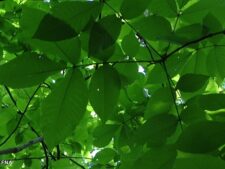
This native tree grows up to 80 feet tall with a trunk up to 2 feet in diameter. The bark is smooth on young trees (B). On mature trees the bark is very shaggy (C). The compound leaves, up to 16 inches long, have 3 or 5 broad leaflets (A). The leaves turn yellow, then brown in the fall (E). The dried, brown leaves can often be seen on the tree well into spring until the new leaf buds open (H). The fruit is a thick, spherical husk with four grooves (A). It splits to produce a large, light brown, edible nut. The winter buds are large, tan with loose bud scales (F,G). In comparison, our only other hickory, the Bitternut Hickory (Carya cordiformis), has skinny, bright yellow winter buds, smaller leaves with 7-9 leaflets, pointed and ridged husks, and its mature bark is not shaggy.
Grows mostly in upland woods, flowering in April and May. In Fontenelle Forest, common on Hickory Trail. At Neale Woods, uncommon on Hilltop Trail
The content of NatureSearch is provided by dedicated volunteer Naturalists of Fontenelle Forest who strive to provide the most accurate information available. Contributors of the images retain their copyrights. The point of contact for this page is: Roland Barth.









